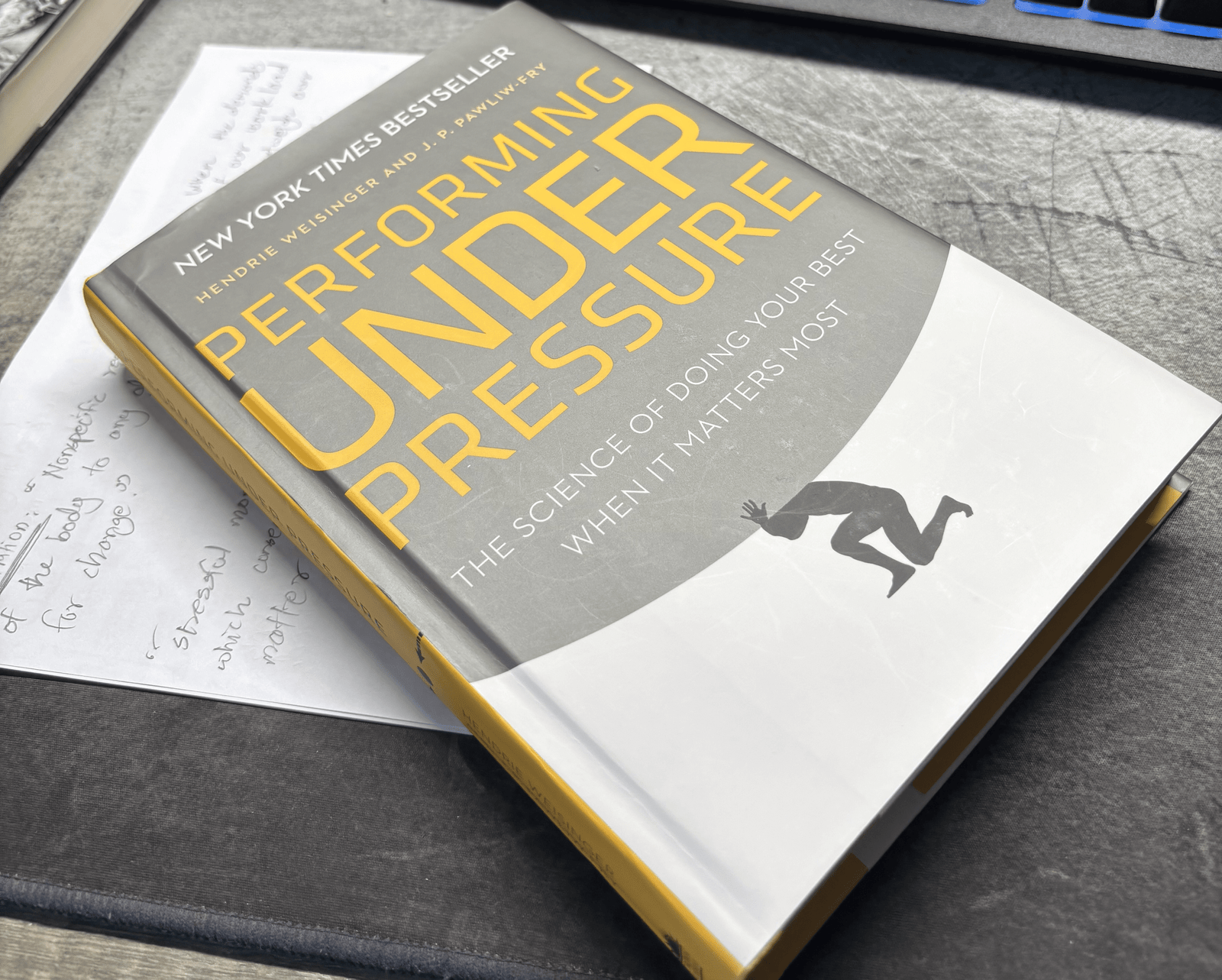Contents
Introduction
In Performing Under Pressure, Hendrie Weisinger and J.P. Pawliw-Fry explore the impact of high-pressure situations on human performance. They challenge the popular notion that people perform better under pressure and instead argue that pressure often leads to diminished cognitive abilities, poor decision-making, and increased anxiety.

If you’d like to purchase the book on Amazon, please follow the links below:
1) Paperback
2) Hardback
Below are my key takeaways from the book.
Truth About Pressure
The authors begin by debunking the myth that pressure makes us perform better. While many believe that thriving under pressure is possible, pressure often distorts judgment, reduces cognitive function, and impairs execution. Recognizing pressure as a disruptive force is the first step toward managing it effectively.
Understanding Pressure vs. Stress
Weisinger and Pawliw-Fry distinguish between pressure and stress. Stress arises from various external demands, while pressure is linked to moments where outcomes matter significantly. Unlike stress, which offers multiple coping mechanisms, pressure demands successful completion. Importantly, the authors emphasize that in most pressure situations, perfection isn’t necessary—competent execution is sufficient.
Science Behind Pressure
Drawing on research, the book highlights how pressure alters brain function. Traders, for example, exhibit risk aversion and negative bias during market downturns due to increased cortisol levels. Furthermore, pressure can interfere with working memory and procedural memory, leading to underperformance. Interestingly, overthinking a well-practiced skill can impair execution, while taking time for deliberate problem-solving tasks can lead to better outcomes.
Pressure Traps and How to Avoid Them
The book identifies several pressure traps that exacerbate performance anxiety:
Support Trap: Worrying about others’ opinions disrupts automatic execution of skills
Incentive Trap: Focusing excessively on rewards creates performance anxiety and cognitive overload
Competition Trap: A ranking mindset leads to stress, whereas an excellence mindset fosters growth and self-improvement.
To avoid these traps, individuals should prioritize internal motivation, frame competition as a means of self-development, and focus on controllable factors rather than external validation.
Long-Term Solution: COTE
The authors introduce COTE—a long-term framework for handling pressure consisting of Confidence, Optimism, Tenacity, and Enthusiasm.
Enthusiasm: Maintaining energy and passion sustains motivation and performance in high-pressure situations.
Confidence: Developing confidence involves practice, action, and recognizing personal successes. Small victories and accountability help build confidence under pressure.
Optimism: Framing events positively enhances resilience. Optimists attribute success to effort and experience, reinforcing a positive cycle of achievement.
Tenacity: Hard work and persistence are crucial. Focus, hope, and problem-solving skills contribute to overcoming challenges.
Conclusion
The central lesson of Performing Under Pressure is that success under pressure doesn’t stem from innate resilience but from preparation, mindset shifts, and practical strategies. By distinguishing stress from pressure, avoiding common pressure traps, and cultivating the COTE mindset, individuals can improve their ability to function effectively in high-stakes scenarios.
If you’d like to purchase the book on Amazon, please follow the links below:
1) Paperback
2) Hardback
Related Reviews
- Review of Performing under Pressure by Hendrie Weisinger and J. P. Pawliw Fry
- Review of How Champions Think by Bob Rotella
- Review of How to Think like a Roman Emperor by Donald Robertson
Author:
